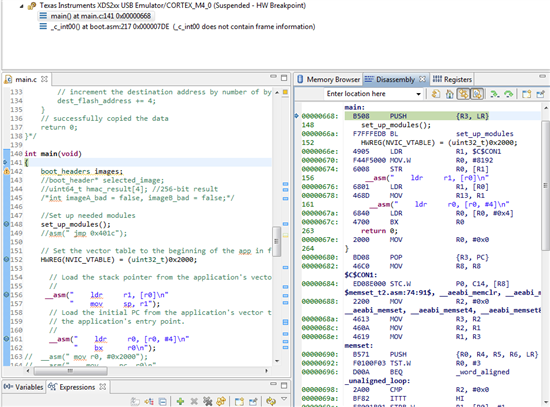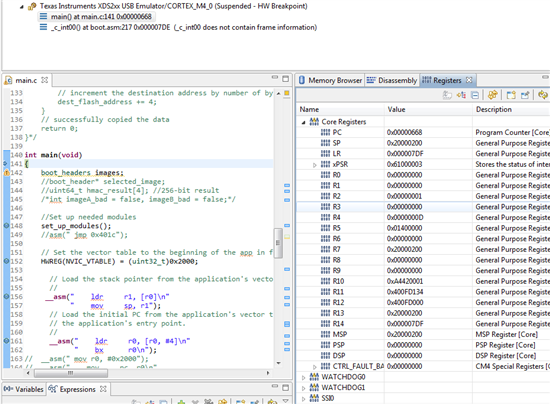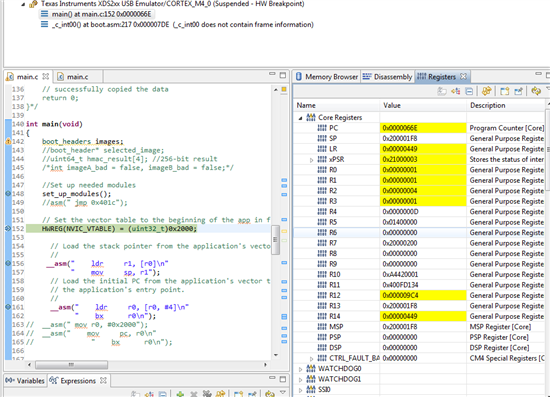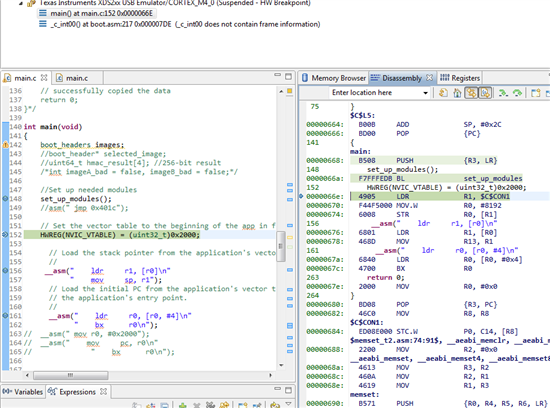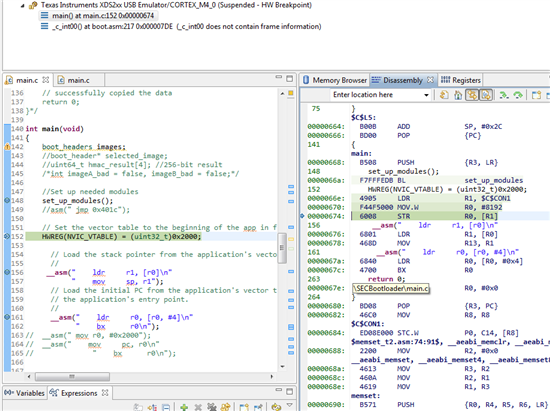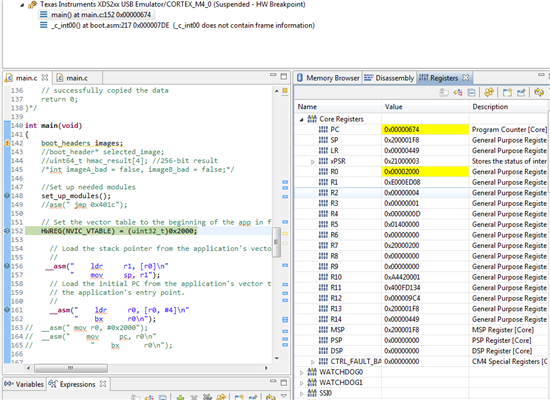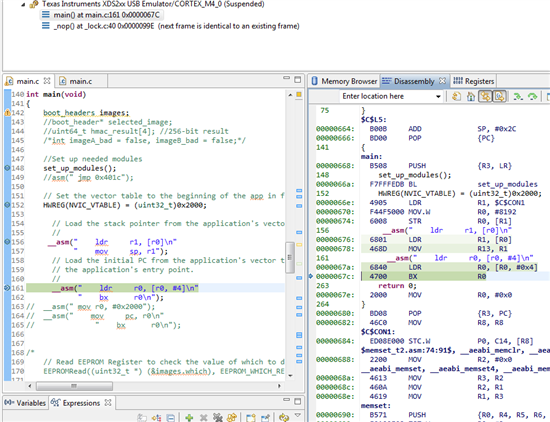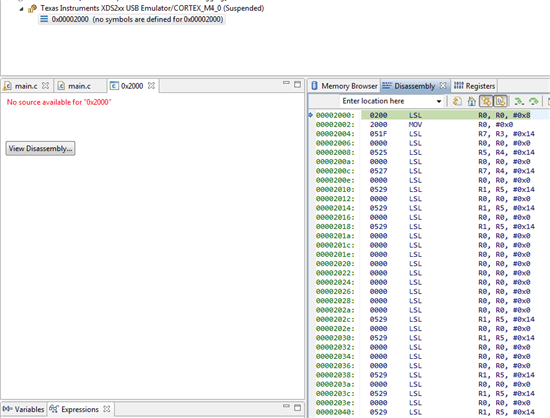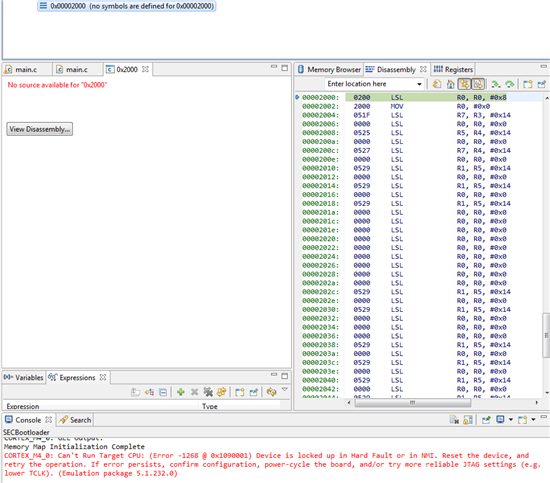hI,
I want to load the program counter of my TM4C129DNCPDT with a register address of 0x2000 which of my flash memory.
Currently i am doing it in the below way:
__asm(" ldr r0, [r0, #4]")
But i found that when this instruction gets executed the PC register gets loaded with address 0x51e. I think it is based on some offset. Not sure.
Instead cannot i directly write the PC with 0x2000 like example: load PC, 0x2000
Is there any instruction which can do it?
Thanks in advance



